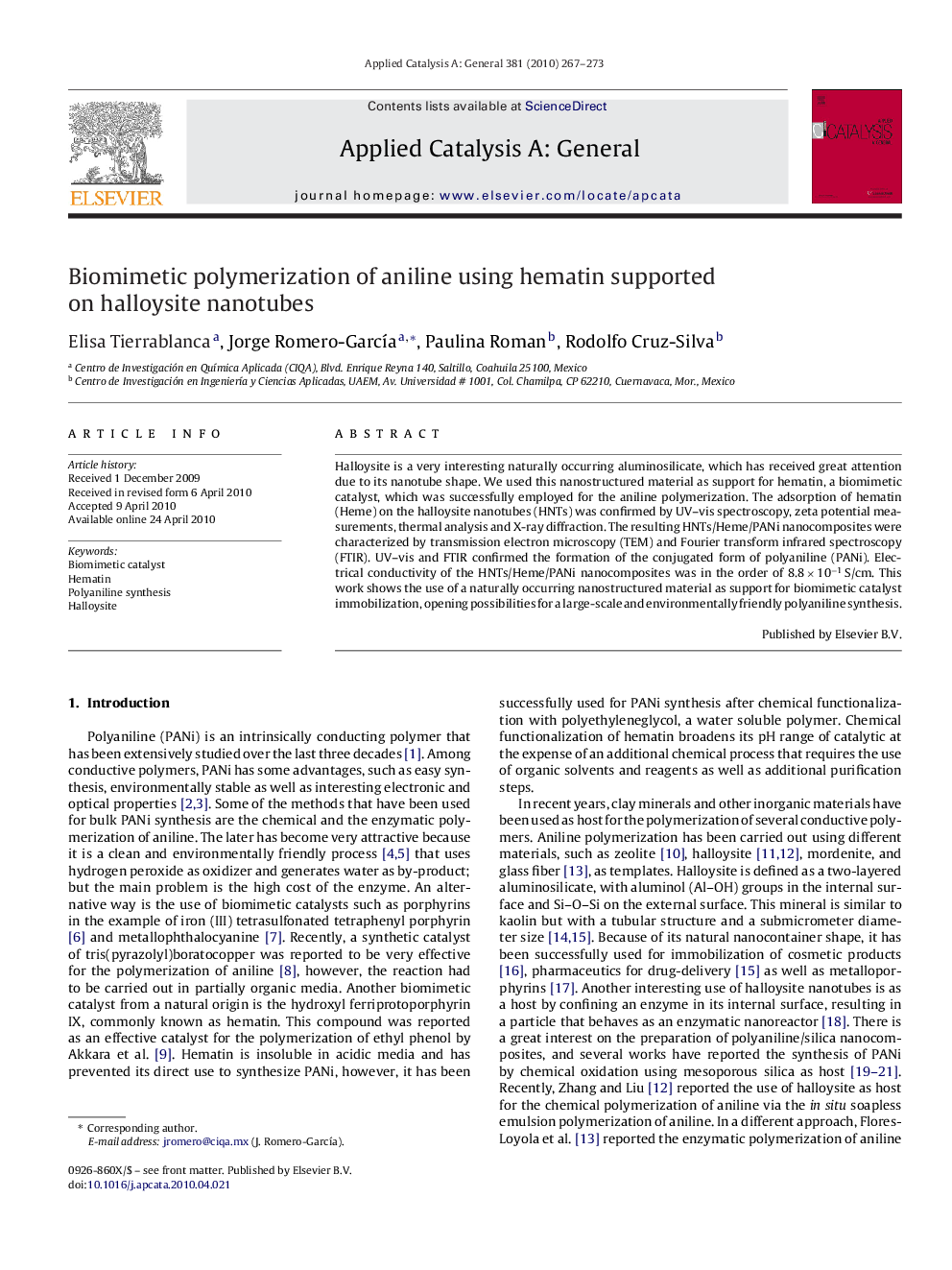| Article ID | Journal | Published Year | Pages | File Type |
|---|---|---|---|---|
| 42052 | Applied Catalysis A: General | 2010 | 7 Pages |
Halloysite is a very interesting naturally occurring aluminosilicate, which has received great attention due to its nanotube shape. We used this nanostructured material as support for hematin, a biomimetic catalyst, which was successfully employed for the aniline polymerization. The adsorption of hematin (Heme) on the halloysite nanotubes (HNTs) was confirmed by UV–vis spectroscopy, zeta potential measurements, thermal analysis and X-ray diffraction. The resulting HNTs/Heme/PANi nanocomposites were characterized by transmission electron microscopy (TEM) and Fourier transform infrared spectroscopy (FTIR). UV–vis and FTIR confirmed the formation of the conjugated form of polyaniline (PANi). Electrical conductivity of the HNTs/Heme/PANi nanocomposites was in the order of 8.8 × 10−1 S/cm. This work shows the use of a naturally occurring nanostructured material as support for biomimetic catalyst immobilization, opening possibilities for a large-scale and environmentally friendly polyaniline synthesis.
Graphical abstractThis work shows the use of a naturally occurring nanostructured silicate as support for hematin, a biomimetic catalyst, and its use for the aniline polymerization. This is an alternative method to chemical functionalization of hematin that also increases its catalytic activity in acidic environments, and opens the possibility for the large-scale and environmentally friendly polyaniline–silica nanocomposites.Figure optionsDownload full-size imageDownload high-quality image (104 K)Download as PowerPoint slide
